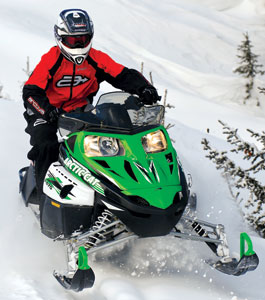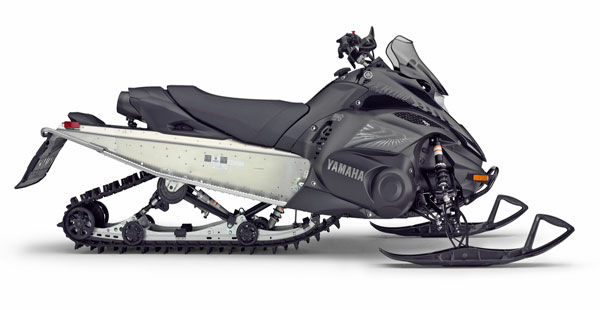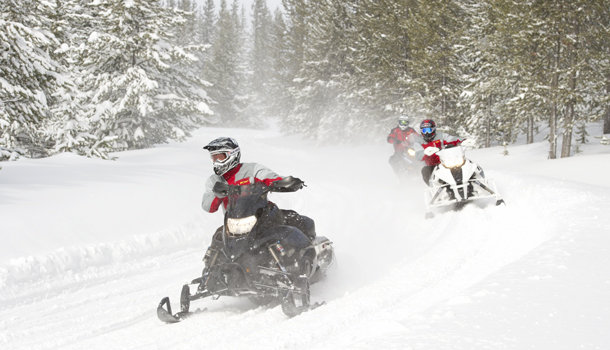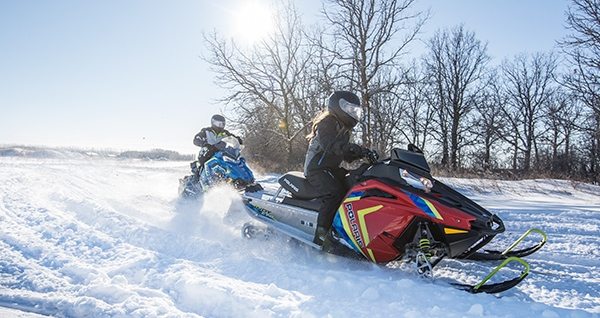Five Fun Factors: The 2019 Yamaha Sidewinder SRX LE
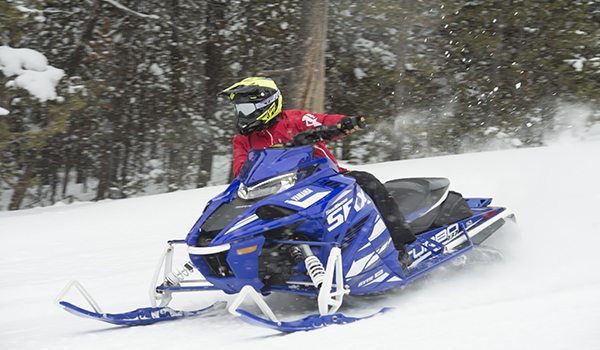
Although Yamaha has many great offerings during its Spring Power Surge order program, there’s one that’s undoubtedly on the minds of many who bleed Yamaha blue: the return of the Sidewinder SRX LE. From speed, to tight ergos and new controls, to the trumpeted new iQS shocks – this sled may have everything you need, and some.
As if you needed any more reasons to give this sled a serious lookover before it’s too late to secure your own, we’re giving you five more.
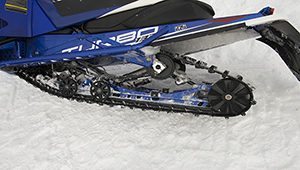
1) The speed – The name of the game is speed when it comes to the SRX. To achieve its stated goal of an additional 6mph faster than the already fastest sled, Yamaha lowered the ride height by using new dual-rate shocks on the ski suspension and front arm of the skid, while also utilizing a new rear torsion spring. Yamaha officials said it was marketing this sled toward the “lake racer focused on unmatched top speed and acceleration,” and they nailed it. Any Sidewinder is really fast, but the changes made to create the SRX are immediately felt – one rider said, “It almost seems unbelievable that the only changes were to the suspension and track, because this thing feels like it has more boost!”
2) The acceleration – Which brings us to that – acceleration (of which, this sled has plenty). The SRX utilizes a track with shorter lugs – opting for a 15- by 137- by 1-inch RipSaw with a 2.86-inch pitch. You know you’re going to buy studs anyways, and with them you’ll be able to ripping past your buddies with ease almost guaranteed.
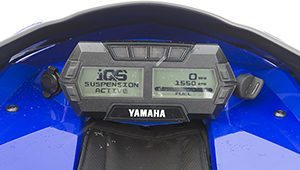
3) The ride – The SRX will be the only sled aside from the Sidewinder L-TX LE in Yamaha’s 12 model 2019 lineup that will utilize Yamaha’s new Fox iQS (intelligent quick switch) suspension system. Using Fox QS3 shocks on the front suspension and rear shock, a rider can now switch suspension settings – from soft, medium and firm – as they ride (no need to adjust already user-friendly clicker shocks). On our Snow Shoot test rides in West Yellowstone our reviewers also raved about the tight and compact ergos that also feel light and agile from a variety of riding positions. We found the windshield to be a little slight on draft reduction, but a quick aftermarket swap-out could make a ride even more comfortable without sacrificing much speed on such a powerful sled. The handling was quite good, although we still have trouble accepting the fact that Yamaha puts Tuner skis on such high-end models. Our advice: Replace them immediately.
4) The lineage – Many sledheads have longed for the return of this storied and well-respected sled. Originally unveiled in 1974 as a limited-build oval racing sled, but its first consumer-ready offering was in Yamaha’s first liquid-cooled trail sled in 1978. We saw a return in 1998 with the 600 and 700 class of tripled-piped sleds, but those soon went away as well when Yamaha began to favor four-strokes at the turn of the century. But it’s back, baby. It’s back, and it’s better than ever!
5) The little things – It’s often not priority number one when purchasing a new sled, but when it comes down to tiebreakers every decision should be considered. That being said, we find the blue and white graphics package very appealing – it stands out, but is also ubiquitous enough to match many different gear pairings. Handlebar controls, including the new throttle lever modeled after the Apex and a new kill-switch, also felt natural and smooth. It also comes equipped with a heated visor plug-in (a cherry on top to accommodate your visor wearing friends on cold adventures).
Editor’s Note: Every issue of Snow Goer magazine includes in-depth new-sled reports and comparisons, aftermarket gear and accessories reviews, riding destination articles, do-it-yourself repair information, snowmobile technology and more! Subscribe to Snow Goer now to receive issues delivered to your door 6 times per year for a low cost.

